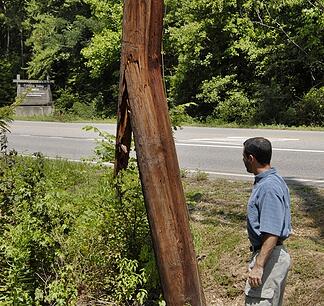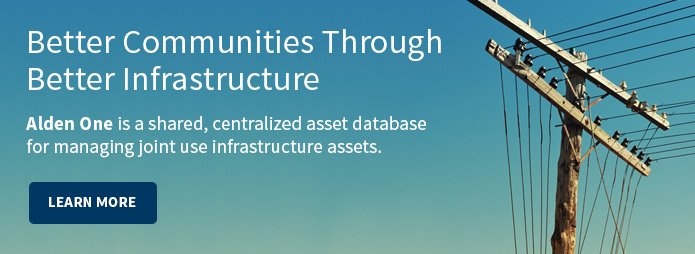Best Practices: Your Company’s Best Bet
 Being a utility pole owner is complicated; there are a lot of moving—and stationary—parts to keep track of and control. We know that most people have all the best intentions, and work hard to be organized and properly manage their company’s poles and attachments every single day. We also understand it is a difficult enough task to keep up with every detail when it is all running smoothly.
Being a utility pole owner is complicated; there are a lot of moving—and stationary—parts to keep track of and control. We know that most people have all the best intentions, and work hard to be organized and properly manage their company’s poles and attachments every single day. We also understand it is a difficult enough task to keep up with every detail when it is all running smoothly.
So what happens if things aren’t running smoothly? What if a major storm occurs and you receive a flood of transfer notices due to new poles being placed, and you find yourself buried in paperwork? Or maybe you end up with fires to put out, literally, such as this one where a hallucinating man climbed a utility pole in California and ended up starting a brush fire. In any case, inconsistencies in your process could mean fines, or safety issues for your technicians or the pubic. Learning a utility pole is rotten after it has fallen on a roadway is obviously too late. These are a couple of examples of things that small lapses in process and organization could produce. What can you do? Have a short, smart list of everyday vital actions that cover your bases and follow them.
We compiled an easy to digest list of just four essential best practices that can mean a lot to how smoothly your next day, week, and even year can go.
Best Practice #1: Make unauthorized attachers pay up.
Few things are more annoying than bootleg attachments, except the loss of revenue they represent. Audit your plant regularly to ensure all attachers are who and where they are supposed to be, and if not, locate the offenders and assess the back rent due. Following up on each invoices is also vital to collecting the amount owed to you in a timely manner.
Best Practice #2: Never overlook safety.
Liability is one of those things in which an ounce of prevention is worth much more than a pound of cure. Utility pole owners always want to keep a close eye on items such as pole violations that could rack up NESC fines or cause dangerous situations for electric workers, attaching companies and the public, and small, often overlooked things can add up. For example, missing guy markers expose utility poles to mishaps with vehicles and cause trip-and-fall situations for pedestrians. Similarly, hidden pole issues, even tiny ones like wood-boring ants, cause big problems by weakening the utility pole’s structure. The best course of action: inventory your poles, identify problems—no matter how small—and fix them before small issues turn into large ones.
Best Practice #3: Get the digits.
It happens to the best of us. Your spreadsheet containing attacher addresses and phone numbers crashed again. This time, you lost some data. Or, the last time you billed an attacher, the letter came back undeliverable. The company had moved, with no forwarding address. Annoyances like this are why keeping all attacher information up to date, preferably in an intuitive, online communication solution designed especially for joint use is a great idea. Being able to bill attachers, or communicate with them in any way, hinges on being able to reach them. Keeping vital information organized and searchable, as well as setting a regular timetable for updating all contacts can impact your company’s bottom line.
Best Practice #4: Take a closer look at your utility poles.
There are a quite a few reasons conducting regular field inventories is important to the health of your organization. Inventories may even pay for themselves in some cases. The most immediate and perhaps most critical reason to conduct regular inventories is to allow your construction division to make needed corrections to poles for safety purposes. Small situations can potentially snowball, and when bad turns to worse, the price tag, and liability, increases. The cost of a simple repair is almost always less than the cost of replacing a pole, settling a lawsuit or paying a fine.
Before your best intentions give way to all the other things the universe throws at you, turn those best intentions into best practices. It is the best course of action you can take for your business.

Comments